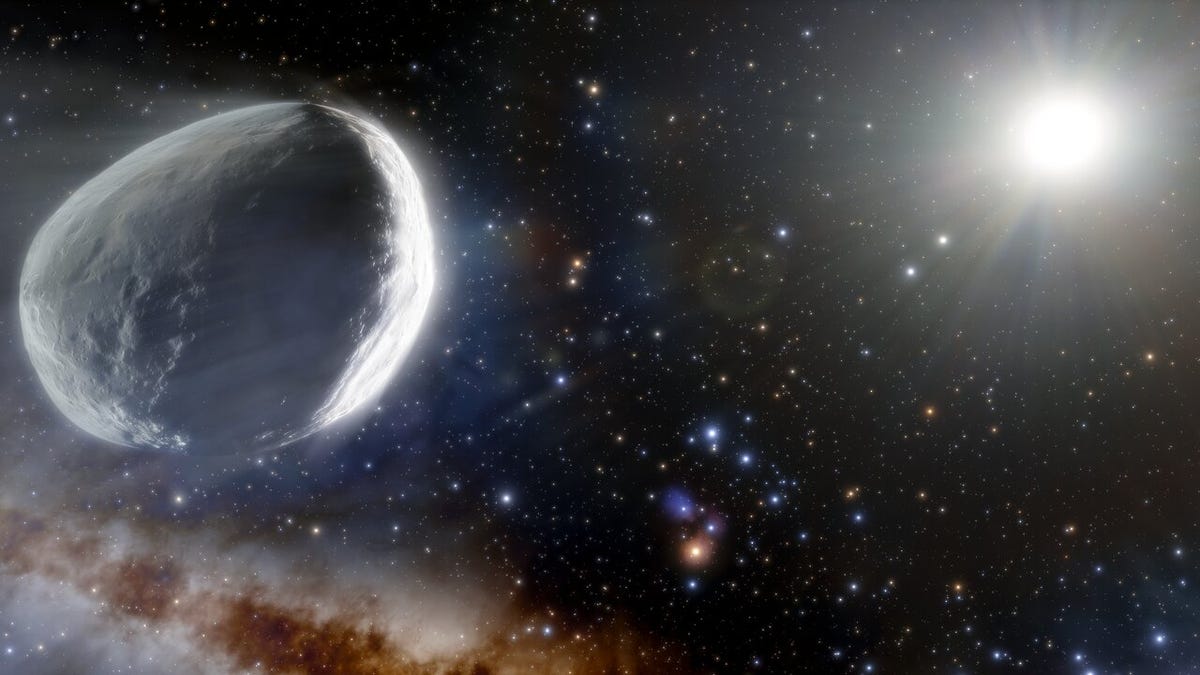Monster comet falling toward the sun is bigger than a Martian moon
Also known as Comet C/2014 UN271, the comet Bernardinelli-Bernstein is set to get brighter in the coming years as it comes closer to Earth.

An illustration of how the monster comet might look in the outer solar system.
Earlier this year, two astronomers discovered what could be the largest comet ever seen in the solar system while combing through data collected by the Dark Energy Survey. Now, a new study led by the same scientists describes this beefy deep space monster as the "nearly spherical cow of comets."
The comet is cataloged as Comet C/2014 UN271 but is also known as Comet Bernardinelli-Bernstein for its discovery duo, Pedro Bernardinelli and Gary Bernstein, both from the University of Pennsylvania.
Early estimates put the comet at as much 125 miles (200 kilometers) wide, but the study, which was submitted for publication in The Astrophysical Journal Letters and posted on Monday in draft form on preprint repository arXiv, puts the likely diameter closer to 93 miles (150 km). That size still implies a mass 10 times that of comet Hale-Bopp, which came to be known as the Great Comet of 1997.
Astronomer Will Gater pulled together a bunch of illustrations of other notable solar system objects to provide some scale for just how big this super space snowball truly is.
Here's a version with Arrokoth from @NASANewHorizons. Thanks for the suggestion @astrokiwi! :) pic.twitter.com/c9TCfO7b9x
— Will Gater (@willgater) September 22, 2021
Some people may be most surprised to learn this mega comet is much larger than Mars' largest moon. In fact, you could put both natural Martian satellites, Phobos and Deimos, side-by-side long-wise and Comet Bernardinelli-Bernstein would still be twice the size of the pair.
This huge comet poses no threat to collide with Earth and send us all the way of the dinosaurs, but it's currently headed into the inner solar system and will make its closest pass by the sun in 2031. It should put on quite a good show for astronomers in the coming decade. In fact, it has already started to flaunt itself a bit: an apparent outburst and increase in brightness was reported by the Las Cumbres Observatory earlier this month.
Time to practice saying the tongue-twister that is Bernardinelli-Bernstein because it's a name we'll hear again in the coming years.

